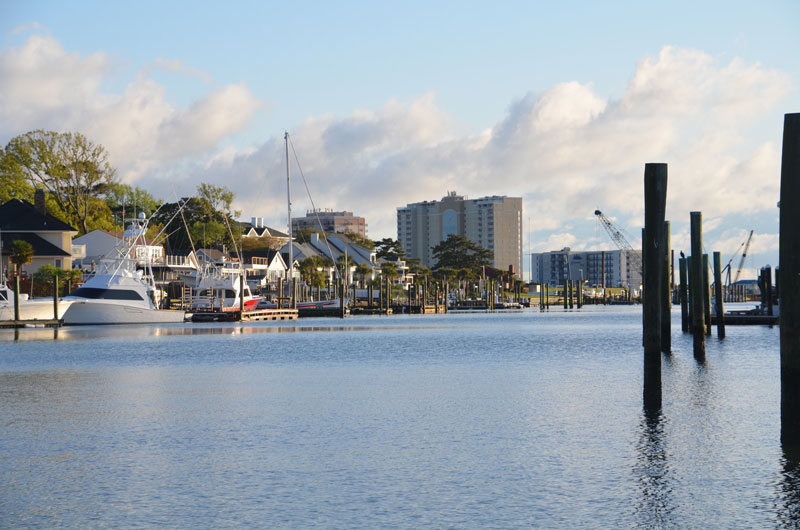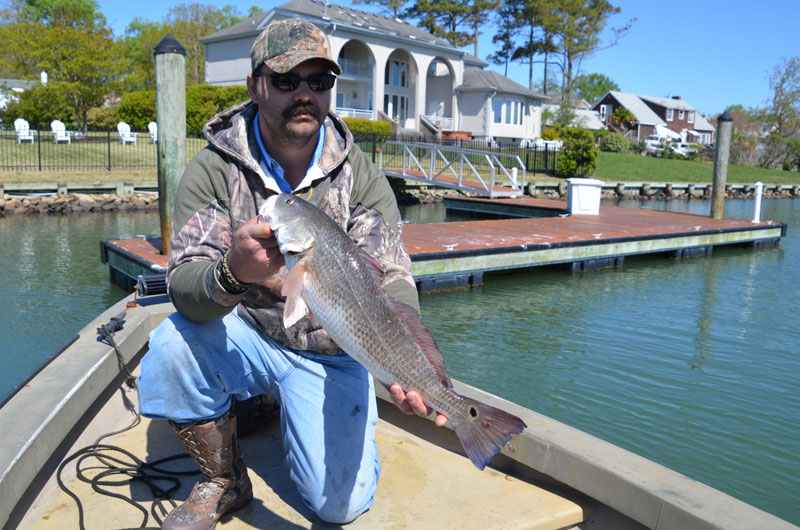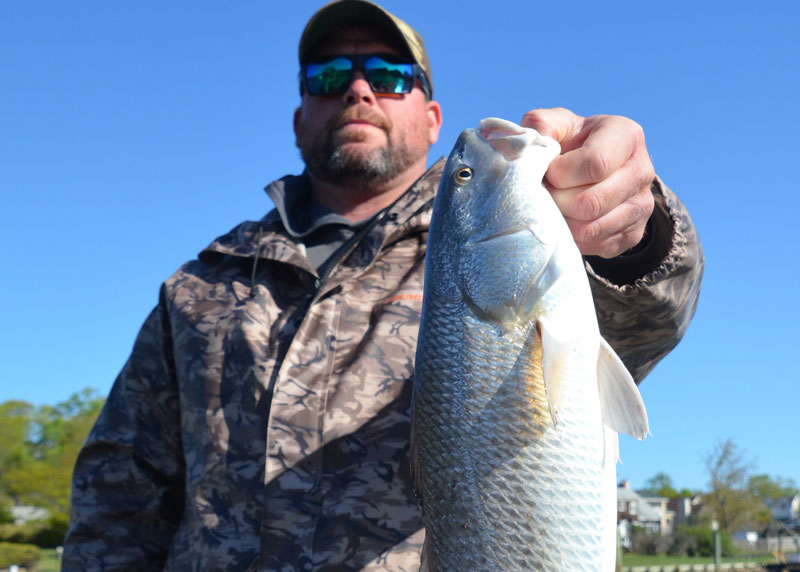Following an unseasonal cold front and pounding rain, a stiff breeze churned the waters a bit much for Chesapeake Bay fishing as the dawning sky began to grow more pinkish to the eastward over the ocean horizon. Not wanting to challenge the power of Mother Nature, we needed a sheltered place to fish. Fortunately, Virginia Beach offers such solutions where we could fish despite the wind without taking a severe beating. Bundled up against the cold and the cutting wind, we launched into Rudee Inlet.

“Just south of the mouth of Chesapeake Bay, Rudee Inlet is Virginia Beach’s only direct access to the Atlantic Ocean,” explained Josh Bourne, a hunting and fishing guide with Wingman Guide Service in Virginia Beach ([email protected]). “The great thing about the inlet is that since it’s such as confined area, we can hit many spots in protected waters on a short trip even when the weather turns rough. It’s a very easy place for kayakers to access. Even on windy days, we can fish in protected waters.”
Fortunately, on this frosty morning we didn’t need to go far to find fish. Rudee Inlet is made up of two main parts, Lake Rudee and the smaller Lake Wesley, which looks like an upside down “Y.” Both merge into Owl Creek, the outlet to the Atlantic Ocean. Several small creeks flow into the 3000-acre system. The inlet averages about 10 to 12 feet deep, but some areas drop to about 30 feet deep. Houses and other buildings surround the inlet, helping to break up the wind.
Depending upon the season, anglers fishing the inlet, the jetties at the mouth, or just outside of it might catch red drum, speckled trout, black drum, flounder, bluefish, and many other species. The catch might also include rockfish, especially along the jetties from the fall through spring. Many charter boats run out of the inlet into the open Atlantic to fish for everything from king mackerel to blue marlin.
“In the spring we find a good fishery for puppy drum” remarked Bourne. “Many red drum stay in the inlet all winter long, depending on the severity of the weather. Bluefish come into this inlet as they migrate along the coast. The inlet is also known for its flounder bite in the summer. The speckled trout bite picks up in the spring and fall.”
On this frigid morning we wanted red drum. Most of the waterfront properties come with docks, and they create excellent cover for redfish, flounder, and other species.

“Baitfish like to hide around the pilings under the docks,” Bourne confirmed as we pulled up to one of his favorite wooden honey holes. “Redfish get under the docks and use those areas as good places to stalk their prey. Birds also like to eat small fish, so the baitfish get under the docks to get protection from above. When I’m fishing for redfish, I like to find a dock with a sloping bottom under it.”
On active-duty with the U.S. Navy in Norfolk, my son Daniel served as mate while the captain maneuvered into a good place to tie to a piling within casting distance of a good dock. There was little tide flowing as the sun began to brighten the sky. We baited our lines with live shrimp.
“When fishing for redfish I like the water to be moving, either an incoming or outgoing tide,” Bourne recommended. “A dead or slack tide makes fishing difficult. As the water begins moving again, everything starts coming to life. Many people prefer to fish an area fast with various artificial baits. That does work, but at times, the fish hone in on fresh, live bait. I use a lot of live shrimp and fresh cut fish for redfish bait.”
“When we catch a redfish, we usually catch several of them under the same dock,” Bourne said. “When we catch a fish or two, we look at all the variables and try to determine a pattern that we can repeat. The inlet holds abundant undersized redfish, but that’s a good thing. Those fish are the future of the fishery.”
As the tide became stronger and the day turned into a warmer, pleasant morning, bigger redfish became more active. We shifted to a nearby dock that showed increasing signs of life, and put our baits as close as possible to the pilings in four to five feet of water. Before long, our reels began screaming as keeper reds stormed off with our enticements.
“Sometimes, we’ll catch reds on one spot on a dock, like a particular post — and nowhere else on the same dock,” Bourne observed. “Perhaps the bottom topography at one spot might be slightly different than at another spot. We will probably never know why those fish like that specific spot at that time, but the fish know.”

Ringed by houses and sitting within the city limits of a populated area, the inlet receives substantial pressure throughout the year, especially during the warmer months. On warm afternoons, many people come out to fish on their docks and enjoy the sunshine.
“As spring progresses and the water warms, crabs emerge from the mud,” Bourne said. “That’s a good time to fish because it’s easier for redfish to find food. When we have more current, we normally see redfish facing their noses into the flow. In the summer, redfish schools break up. That’s when we catch one or two at a time and move to another spot to catch a few more.”
In late summer and early fall, giant male redfish gather in enormous spawning schools called “drumming aggregates” in nearshore waters. Males start drumming to call females to them.
“In late summer we see giant bull reds in huge schools where the Chesapeake Bay meets the Atlantic Ocean,” Bourne said. “We sight-fish for them. In the fall, the fish prepare to migrate and get together in big schools as they get ready to depart. The ones that will stay hunker down in the inlet throughout the winter.”
-By John N. Felsher
John N. Felsher is a professional freelance writer, broadcaster, photographer, and editor. An avid sportsman, he's written more than 3300 articles for more than 160 different magazines on a wide variety of outdoor topics. He also hosts an outdoor tips show for WAVH FM Talk 106.5 radio station in Mobile, Al. Contact him at [email protected].
Sign up here to get the weekly FishTalk Chesapeake Bay and Mid-Atlantic fishing reports in your email inbox, every Friday by noon.